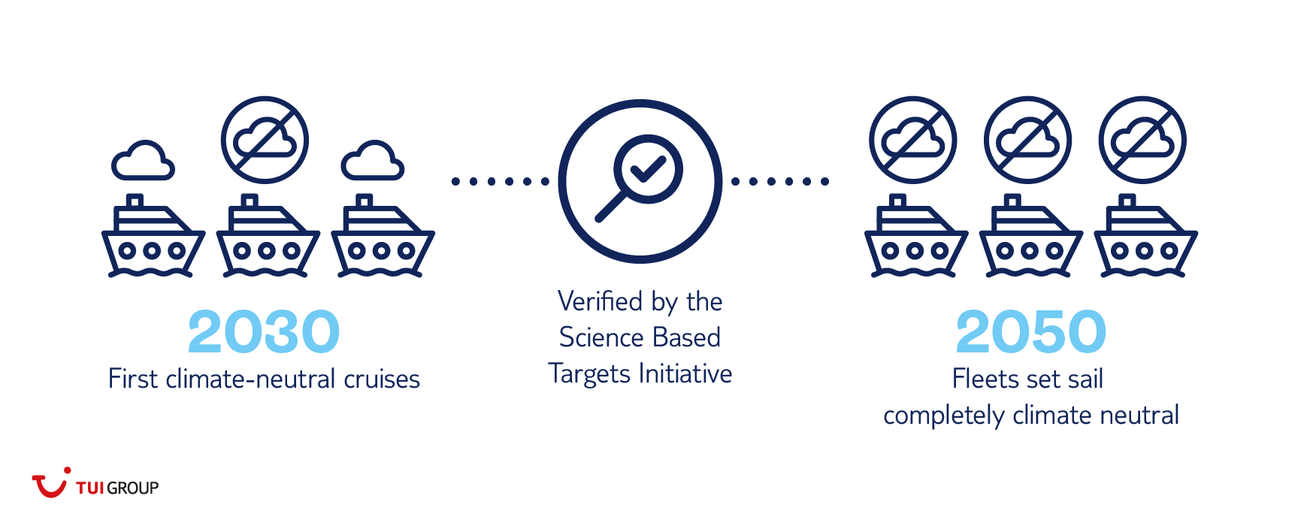CRUISES: ABSOLUTE REDUCTION OF EMISSIONS
By 2030 at the latest, we want to offer the first climate-neutral cruises. At the same time, the TUI Cruises fleet – which includes Mein Schiff and Hapag-Lloyd Cruises – is reducing CO2 emissions by 27.5 percent in absolute terms by 2030. Currently, no other cruise line worldwide commits to an absolute reduction target. The TUI Group companies are also the first in their industry to have their reduction target verified and confirmed by the independent Science Based Targets Initiative (SBTi) – a cooperation between the United Nations Global Compact, the World Resources Institute and the World Wide Fund for Nature (WWF).
To ensure maximum climate efficiency, we have always invested in the most modern, low-emission ships. The ships in the Mein Schiff fleet that entered service between 2014 and 2017 consume 30 percent less fuel than comparable ships. For the two most recent additions to the fleet in 2018 and 2019, the savings are as high as 40 percent. Hapag-Lloyd Cruises' ships built in 2013 and later are also characterised by high energy efficiency. In particular, we rely on an intelligent energy management system, efficient air conditioning systems, a new type of lighting control and the use of waste heat from engines. TUI Cruises is consistently pushing the limits of what is technically feasible and has already been able to reduce its carbon efficiency by 14 percent between 2015 and 2019.




 Austria
Austria


